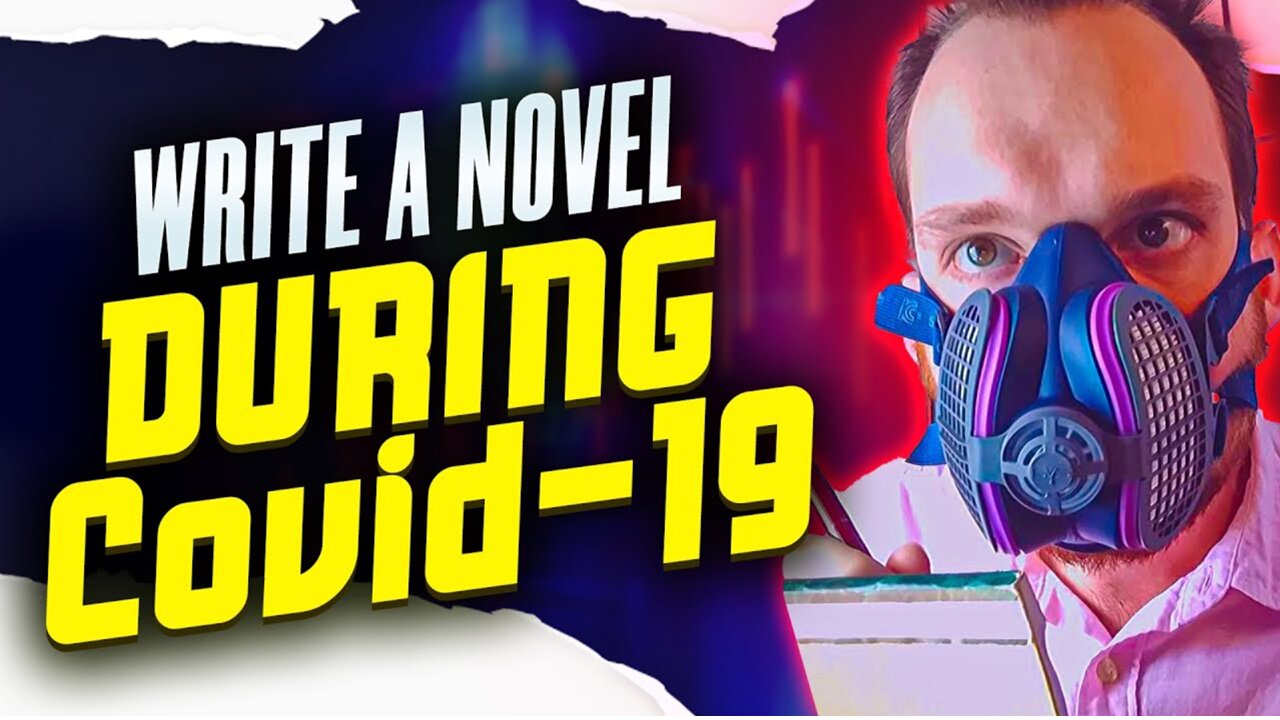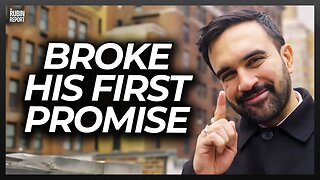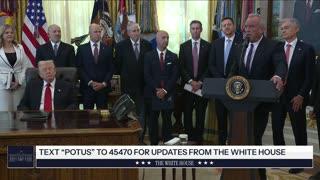Premium Only Content

How to Write a Novel During COVID-19: Tips from Celebrity Ghostwriter and Writing Coach Joshua Lisec
👉 Write a useful book that converts readers into high-paying clients. Free training shows you how: https://lisecghostwriting.com/golden/ 📖
Aspiring authors around the world often wonder how to write a novel that keeps readers turning pages from beginning to end. During the height of the COVID-19 lockdowns, while millions were adjusting to remote work and long days indoors, celebrity ghostwriter and writing coach Joshua Lisec shared the ultimate roadmap for transforming isolation into inspiration. This episode, “How to Write a Novel During COVID-19: Tips from Celebrity Ghostwriter and Writing Coach Joshua Lisec,” breaks down the professional novel writing tips and story structure methods Lisec has used to craft bestselling fiction and memoirs alike.
Lisec explains that periods of uncertainty—such as the pandemic—often provide a rare opportunity to reflect, write, and build something lasting. Many began asking how to start writing a novel for beginners, or even how to write fiction novel manuscripts that actually sell. Lisec provides an actionable framework to help writers channel their experiences into stories that resonate with readers seeking escape, entertainment, and meaning.
At the heart of his system is the three-act structure, a time-tested storytelling model that every successful novelist—whether writing thrillers, memoirs, or fantasy epics—should master. For anyone who has struggled with how to write a novel outline, Lisec’s method transforms vague ideas into a structured, compelling narrative arc. Each act serves a distinct purpose: setup, confrontation, and resolution. By following this pattern, even first-time authors can produce manuscripts that read like professional work.
He begins with the opening—the how to start a novel first sentence moment that instantly hooks readers. Lisec emphasizes the importance of establishing setting, tone, and tension right away. Readers must know who the story is about, where it takes place, and what is at stake. His novel outline tips encourage authors to avoid overexplaining early on. Instead, start strong with a moment of intrigue or action—something that compels the reader to keep going.
Once the story world is set, Lisec moves to the inciting incident, the event that disrupts the protagonist’s normal life and sets the plot in motion. Using well-known examples from popular culture, he demonstrates how successful fiction writers draw readers in by upending the status quo. His how to write a novel step by step explanation makes it clear: without a powerful inciting event, there’s no reason for readers to care what happens next.
As the plot develops, the focus shifts to second thoughts—the moment when the protagonist hesitates or doubts whether to take action. This internal conflict, Lisec explains, is what makes characters believable. Whether working with a fiction ghostwriter, a novel editor, or writing solo, authors must remember that emotional tension drives every great story.
The midpoint, a key part of Lisec’s drafting a novel framework, brings the biggest twist. It’s where the story changes direction—where assumptions are shattered, mentors disappear, and characters are forced to grow. For anyone overwhelmed by how to start writing a novel for beginners, understanding how to pace this turning point is critical. The midpoint is what separates amateur storytelling from professional-level fiction.
From there, the stakes escalate. In Lisec’s guide on how to write fiction novel drafts that hold readers’ attention, he highlights the importance of increasing obstacles and tightening tension through the confrontation phase. The protagonist must face challenges set by the antagonist or environment. Every decision should raise the cost of failure. This section of the video gives viewers the tools to keep readers emotionally invested through rising action and crisis.
Eventually, the story reaches its resolution—the climax of act three, followed by the falling action and denouement. Lisec teaches how to close narrative loops and answer the key questions readers have been wondering about since the beginning. His novel writing tips emphasize the balance between resolution and anticipation. Even if the story ends, there should be room for future possibilities—especially for authors planning a sequel or series.
Throughout the video, Lisec draws on his extensive experience as a celebrity ghostwriter and fiction editor who has worked behind the scenes on bestselling novels. His insights go beyond theory. They’re based on what actually works in publishing and what readers respond to. By combining persuasive writing techniques with proven narrative structures, Lisec helps writers craft novels that are not only well-written but commercially viable.
During the pandemic, many aspiring authors downloaded countless guides and how to write a novel PDF resources online, yet struggled to stay consistent. Lisec’s approach removes that overwhelm by focusing on structure first. His practical book outline framework and story development techniques show how to write a novel in a week—not by rushing quality, but by focusing on what truly matters: character motivation, pacing, and purpose.
Lisec’s writing coach perspective also addresses one of the most common struggles writers face: editing. Understanding editing novels is just as important as writing them. A strong first draft only becomes a great book after careful revision guided by story logic. Lisec’s advice helps authors self-edit with clarity, improving every scene and line before working with a novel editor or submitting to agents.
For writers stuck halfway through their manuscript, this discussion is a reminder that even creative work thrives on structure. Whether crafting science fiction, romance, or literary fiction, the same storytelling laws apply. The three-act system Lisec outlines acts like a GPS—keeping writers on course from opening line to final chapter.
Joshua Lisec’s novel ghostwriter background adds another layer of credibility. He’s not teaching theory; he’s applying professional standards used to ghostwrite and edit novels that sell internationally. For anyone who wants to learn how to write a novel step by step and actually finish it, his method ensures progress without guesswork.
He also highlights how crises like COVID-19 historically increase book sales, but only for authors writing in the right genres. His persuasive writing framework helps writers identify where their story fits in the marketplace, ensuring they create something both artistically fulfilling and commercially smart.
By the end of the video, viewers gain not just knowledge but direction. Whether they need help with drafting a novel, structuring chapters, or finding their author voice, Lisec’s teachings provide clarity and confidence. His novel outline tips and examples show exactly how to transform ideas into a coherent, emotionally engaging story that keeps readers hooked until the final page.
For those ready to take their project to the next level, Lisec also offers personalized feedback sessions where writers can map their stories to the three-act framework and refine their manuscript into a publishable draft. This hands-on approach reflects his reputation as both a celebrity ghostwriter and one of today’s leading writing coaches.
Ultimately, this episode delivers the guidance every aspiring author needs during uncertain times. It’s not just a tutorial on how to write a novel—it’s a mindset shift. Lisec reminds writers that storytelling remains one of the most powerful ways to connect, inspire, and make sense of the world—even in isolation.
Whether you’re working on your first manuscript or seeking to elevate your next one, Joshua Lisec’s novel writing tips, storytelling techniques, and insights on persuasive writing provide a clear, motivating path forward. For those serious about learning how to start writing a novel for beginners, this masterclass is the place to begin—and the inspiration to finally finish.
-
 2:12:18
2:12:18
Side Scrollers Podcast
5 hours agoSide Scrollers VTuber TAKE OVER with Kirsche, Rev Says Desu & DarlingStrawb | Side Scrollers
52.8K4 -
 LIVE
LIVE
StoneMountain64
2 hours agoArc Raiders is actually INCREDIBLE
94 watching -
 2:03:04
2:03:04
MattMorseTV
5 hours ago $0.89 earned🔴Trump’s EMERGENCY Oval Office ANNOUNCEMENT.🔴
72.5K72 -
 LIVE
LIVE
GrimmHollywood
6 hours ago🔴LIVE • GRIMM HOLLYWOOD and BIG TALL REDNECK • 3K 3XL TAKEDOWN • PGA • BF6 REDSEC • ARC RAIDERS
79 watching -
 3:11:27
3:11:27
Right Side Broadcasting Network
19 hours agoLIVE REPLAY: President Trump Makes an Announcement - 11/6/25
152K64 -
 1:04:07
1:04:07
The Rubin Report
5 hours agoZohran Mamdani Humiliates Himself by Breaking His First Promise Only 24 Hours After His Win
90.4K157 -
 1:04
1:04
Steven Crowder
4 hours agoTEASER: Deport All Illegals | Change My Mind
158K538 -
 4:37:26
4:37:26
Barry Cunningham
18 hours agoBREAKING NEWS: PRESIDENT TRUMP MAKES AN ANNOUNCEMENT!
39.9K27 -
 53:52
53:52
The White House
6 hours agoPresident Trump Makes an Announcement, Nov. 6, 2025
31.4K48 -
 1:02:55
1:02:55
VINCE
7 hours agoThey're Coming For You Next | Episode 163 - VINCE 11/06/25
255K397